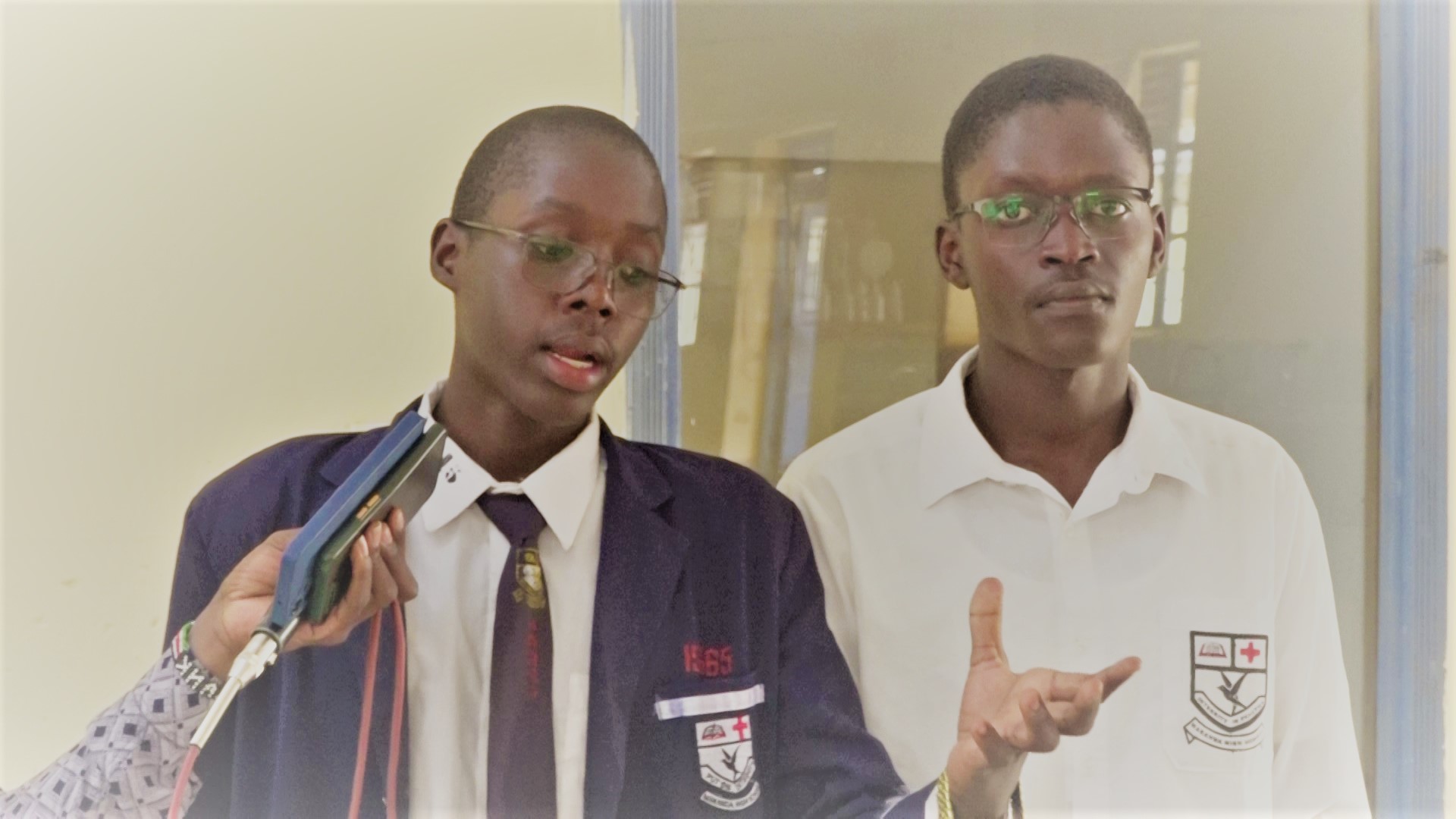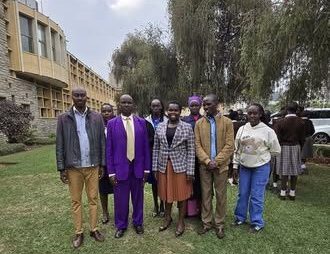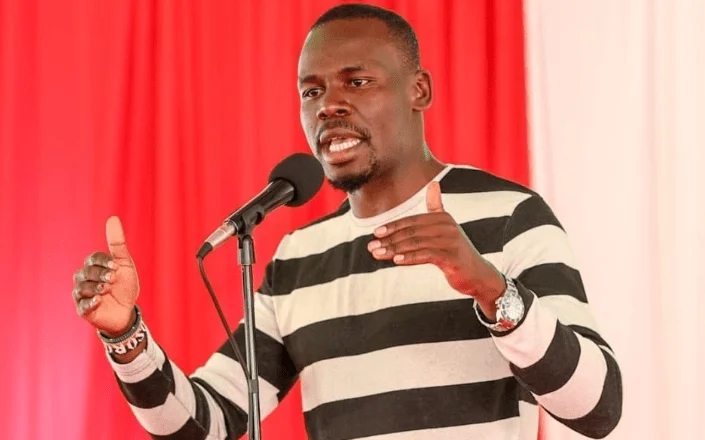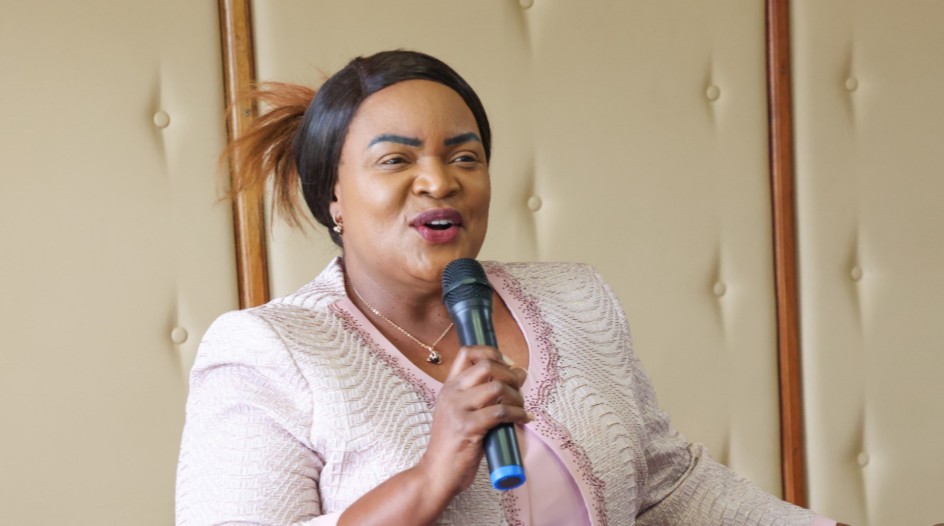The Nyanza region Kenya Science and Engineering Fair (KSEF)2025 saw the Robotics category take centre stage.
Students from various schools presented different inventions for using robots in mathematics class.
CEMASTEA, through its website, announced that the Robotics category, which was previously designed for Science, Technology, Engineering, and Mathematics (STEM) modelled schools, was now open to all schools in the country.
The 61st edition of the Nyanza Science and Engineering Fair(KSEF) was held at Nyamira Girls’ High School in Siaya County.
The four-day fair brought together 624 young student innovators from schools across the six counties in the Nyanza region.
These innovators presented 312 science innovations, competing to make it to the national event, which will take place at Kangaru Boys High.
Only 104 top scientific innovations from the regional level will be selected to represent Nyanza in the national competition.
Speaking during the official opening of the Nyanza regional KSEF competition, the Regional Director of Education, Lawrence Karuntimi, underscored the importance of the KSEF event, saying it is an opportunity for students to promote Science, Technology, Engineering, and Mathematics (STEM) education and innovation, which is the backbone of progress in any society.
Karuntumi said students become competent in problem-solving and critical thinking through STEM innovation and education.
READ ALSO:
Blow to learning as two classrooms ripped off by heavy rains in Homa Bay
He said that STEM education and innovation drive technological advancement in the country and help spur economic growth by creating job opportunities and fostering entrepreneurship.
The KSEF competitions aim to arouse students’ interest in pursuing courses in STEM subjects.
The regional director encouraged the young scientists and innovators who will not make it to the national competition not to regard their innovations as waste but to build on the experience to develop better innovations that will be successful.
“As you try to solve global problems, please know that there is no failure in this field of innovation. What you get is experience that you will leverage to do better, so everyone who takes part in the competition is already a winner,” said Karuntuni.
The RDE, flanked by the KSEF Nyanza region chairperson, Peter Magawe, urged the students to keep abreast of constantly emerging innovations, especially in Artificial Intelligence and robotics, to develop better innovations to solve global challenges like climate change, security, and access to clean water.
Magawe said the main objective of the 61st edition of KSEF is to help the government achieve Vision 2030 and assist the region in solving emerging problems.
“Through your innovations, we are sure that not only the Kenyan government but also the region and the world will achieve their agenda and find solutions to emerging problems,” said Magawe.
The KSEF regional chairman asked the young innovators to focus on projects that utilise locally available resources to solve problems in agriculture and boost food security.
He exuded confidence that the Nyanza region will clinch the top spot at the national competition in 2025, just as it did by emerging as the best region in the country in 2023 and 2024.
“We have a strong team behind our innovators and are prepared to retain the top spot nationally. It does not stop there; we are going all the way to continental completion in South Africa, and the global level is the United States, just like we managed to go for global completion in Ireland last year,” said Magawe.
They have also assured the innovators that judging will be based on scientific principles aligned with the competition’s educational objective.
According to student innovators Elvis Nevil and Jerry Victors from Maranda High School, who exhibited a robotic project dubbed the “shadow chaser,” robots are the ultimate solution to improving efficiency in product delivery in setups such as hospitals.
“Our project, the ‘shadow chaser’, intends to solve the inefficiency of human labour, which will also save time because robots work tirelessly compared to humans,” said Elvis.
Elvis said that while all the schools that participated in the robotics category were provided with materials by the KSEF to create robots, the aim was to showcase how robots can improve product delivery from different points. They created a ‘claw bot’ that can raise loads more efficiently.
“For our robot, we went for the claw bot design, where the claw is above the brick (robot brain), which gives it the ability to raise loads with minimal effort,” added Elvis.
For his part, Gerremy exuded confidence that their project would make it to the national competitions and go beyond regional competition because of the hard work they and their teachers have put in.
The students said that if they are successful and their project is produced on a large scale, it can help solve the problem of the perennially high cost of fuel globally.
Their teacher, Godfrey Ouma Kilo, commended the government for introducing robotic studies in the CBC curriculum, saying it will help students become acquainted with robotic principles at an early age, just as it is done in the developed world.
He also thanked CEMASTEA for ensuring that successful projects are incubated and patented and that the original inventors can earn money from them.
“Initially, inventions by students didn’t go anywhere beyond the national competition, but over the last 2 to 3 years, there has been a paradigm shift, and we have seen many organisations like CEMASTEA partner with schools to ensure the student inventions eventually pay off,” said Kilo.
By our reporter
You can also follow our social media pages on Twitter: Education News KE and Facebook: Education News Newspaper for timely updates.
>>> Click here to stay up-to-date with trending regional stories
>>> Click here to read more informed opinions on the country’s education landscape
>>> Click here to stay ahead with the latest national news.






